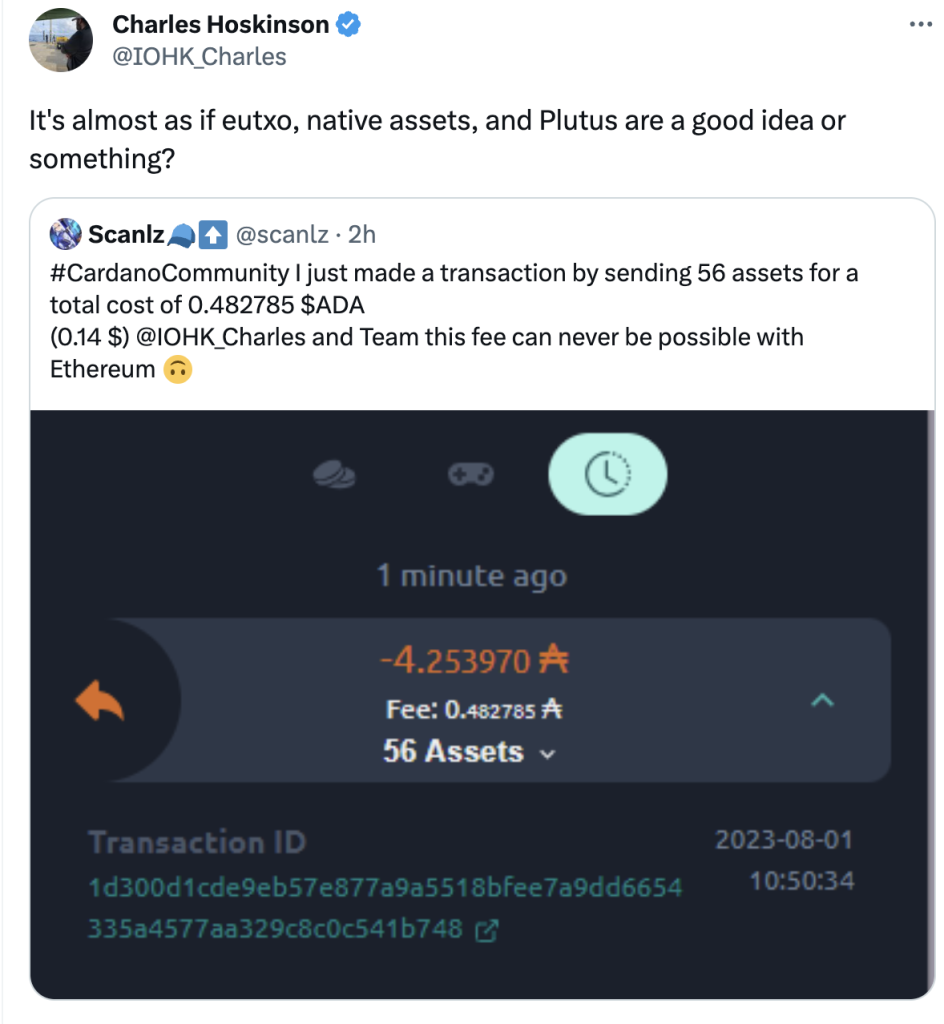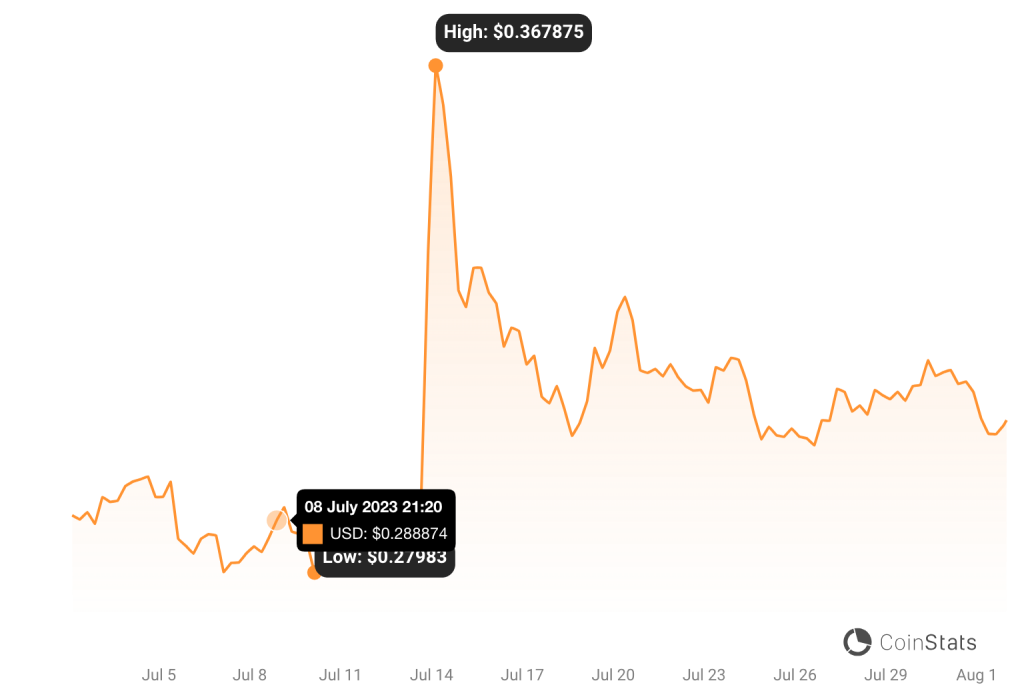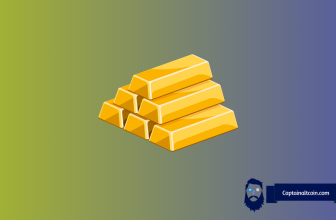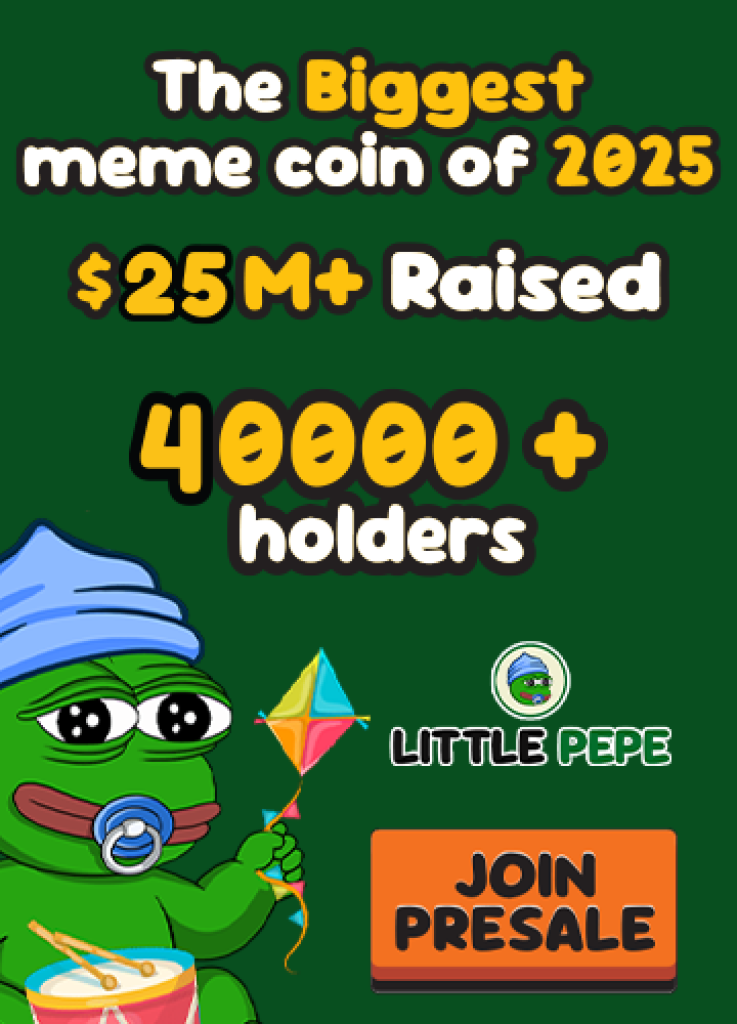
Charles Hoskinson, the co-founder of Ethereum and creator of Cardano, has once again ignited discussions in the cryptocurrency space with his recent retweet. In a seemingly subtle jab towards his former project, Hoskinson retweeted a user who praised the innovations on Cardano’s blockchain while highlighting the efficiency and potential superiority of its EUTXO model and native assets over Ethereum’s model.

What you'll learn 👉
EUTXO Model and Native Assets: The Backbone of Cardano’s Advancements
Cardano’s EUTXO model, introduced with the Alonzo upgrade, represents a significant step forward in blockchain technology. Building upon the traditional UTXO model, EUTXO brings support for multi-assets and smart contracts to the platform. Deterministic transactions within this model offer users a level of confidence in their status before being confirmed on the blockchain, while parallelization enhances security and scalability.
Doge2014 raises 500K in days celebrating Dogecoin. Make potentially big profits and get in on exclusive airdrop!
Show more +A standout feature of Cardano’s EUTXO model is the incorporation of native assets alongside ADA, the platform’s primary cryptocurrency. Native assets open the door to diverse use cases and are governed by minting policies written in Haskell and compiled into Plutus Core, the native smart contract language for Cardano.
Plutus: The Powerhouse for Smart Contracts
Plutus, a Turing-complete language based on Haskell, empowers Cardano’s smart contract capabilities. By leveraging Plutus, developers can ensure secure and correct execution of their smart contracts. Plutus Core, the scripting language for Cardano’s EUTXO model, enables developers to write validator scripts in Haskell, which are then executed during transaction validation on the blockchain.
In the context of native tokens, Plutus Core policy scripts play a crucial role in the minting and burning process, granting control over the creation and destruction of these assets in a trustless manner.
A Deeper Look Ahead
As the crypto community engages in debate over the potential advantages of Cardano’s EUTXO model and native assets, it’s crucial to delve further into the nuances of these advancements. As with any emerging technology, understanding the implications and limitations is essential in assessing the broader impact on the blockchain space.
While Hoskinson’s tweet has certainly piqued interest, it remains to be seen how the market and industry players respond to the ongoing developments on both Cardano and Ethereum.
Cardano’s price today is $0.306297 per ADA coin, which represents a -1.14% decrease over the last 24 hours. The total market capitalization stands at $11 billion, with a circulating supply of 45 billion ADA. In the past day, $437 million worth of ADA has been traded on exchanges. Cardano currently ranks as the 8th largest cryptocurrency by market cap. While the recent price drop may disappoint some investors, Cardano maintains a strong position in the overall crypto market thanks to its innovative proof-of-stake blockchain and robust development roadmap.

Disclaimer: The content of this article is for informational purposes only and should not be considered as financial or investment advice. Always conduct thorough research before making any investment decisions.








